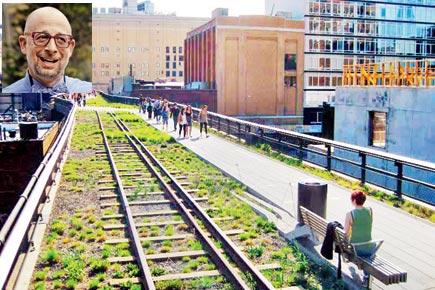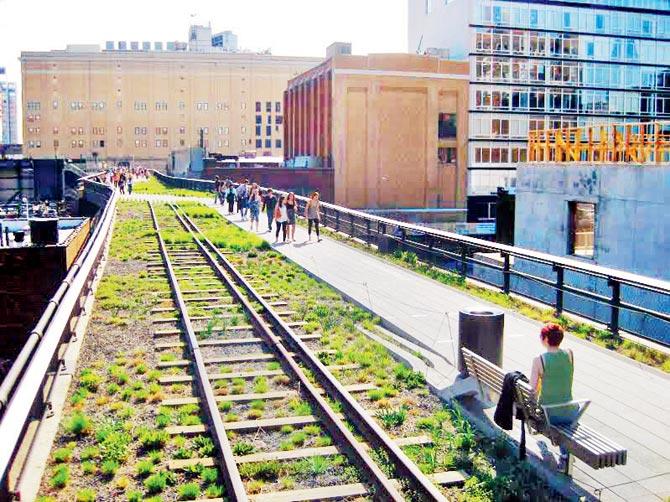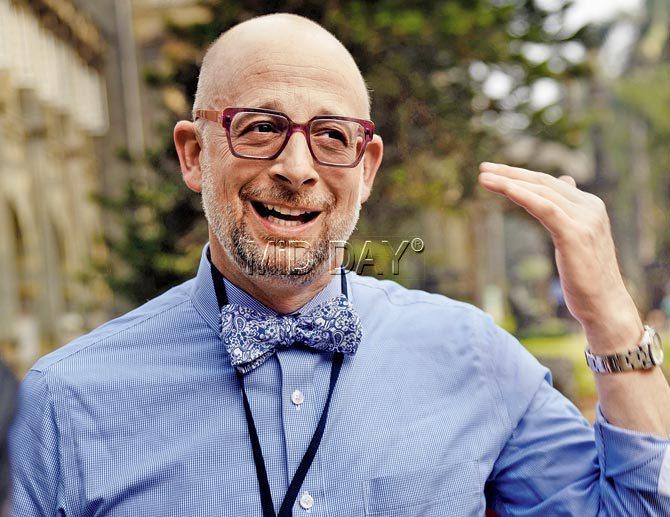Joshua David, president on the World Monuments Fund, on what it takes to pull off a project like High Line, New York City’s most popular preservation project


A section of the High Line park
As the debate over open spaces, public parks and industrial heritage — namely the mills and railway stations — continues to rage in the city, Mumbai’s residents and civic bodies could do well to take a leaf from New York City (NYC) — the High Line in particular.
ADVERTISEMENT

Joshua David played a central role in the push for High Line. Pic/Pradeep Dhivar
The High Line is a linear greenway built on a 4.8 km-long elevated section of a disused New York Central railroad. Built in 1934, the railway line was used by freight trains until 1980, when the growth of interstate trucking led to an abandonment of the railway line.
Slated for demolition in the 90s, the railway line found help in the form of Friends of the High Line, a private non-profit conservancy organisation formed by Joshua David and Robert Hammond, who lived in the neighbourhood and were thrilled to see wildflowers grow in the space between rail tracks. Cue to 2014 and the pet preservation project, work on which began in 2006, now sees both New Yorkers and tourists as its regulars.
David, the current CEO and president of the World Monuments Fund, is in town for a two-day conference on conservation ‘The Future of Our Past’ conducted by the Observer Research Foundation at the CSMVS. Edited excerpts:
Since the completion of the High Line Park, what does it feel like looking back?
When Robert Hammond and I started working on it in 1999, we had a dream and a vision about what it would become. We never imagined it would captivate such a large number of people — it draws 7-8 million visitors a year. People tell us that they get traction with projects when they say it’s like the High Line Park.
It must have been a challenge — right from government support to funding.
Pulling off a project like this is not easy. You have to passionately believe in it. And any project like this exists in its own context — its city, its people, its government, the philanthropy around it. For instance, we didn’t have the government’s support. We took the change of mayors [from Rudy Giuliani to Michael Bloomberg] as an opportunity. If a political environment is not favourable, then you have to wait till elected leaders finish their term.
What are your takeaways from the High Line project?
If you have a project that you dream of doing, you should do it. Secondly, I would urge elected officials to pay attention to grassroots movements. Thirdly, the High Line succeeded because we had a set of circumstances that allowed it to happen.
Tell us more about the need for philanthropy in conservation projects.
The High Line survives on donations and all the maintenance is from the monies raised through Friends of High Line. We are accustomed to the idea that the creation and support of parks and the conservation of heritage are government functions. If that was the bar we had set, then it wouldn’t have happened.
There has been criticism that since it was made, real estate prices in the area have gone up and working class can no longer afford to live there. Any comments?
The neighbourhood has changed and it has become more expensive than is desirable. But that has happened all across NYC. What we need to make sure is that the cities have a lot of subsidies. The way growth is going, how do we make sure they are equitable and there is affordable housing? When we were doing the High Line, affordable housing was a component of the efforts that happened around it; if you were doing it again today, you would elevate the equation and have a stronger role for affordable housing.
Mumbai has a lot of industrial heritage. However, there is a common belief that these buildings — mostly less ornate — are not worth preserving if they are not functional. Did you face a similar situation?
It’s something we ran up against, that it was ugly and an eyesore. What that overlooks is that there is important architecture. There is great beauty in these buildings, and like many kinds of beauty, you have to stop and appreciate these.
They offer spectacular reuse opportunities are how we think these buildings should be looked at. Look at them for art exhibitions, reintroduction for a new kind of industry – workspaces and residences. Industrial buildings are
most coveted for office spaces as they convey a certain attitude.
 Subscribe today by clicking the link and stay updated with the latest news!" Click here!
Subscribe today by clicking the link and stay updated with the latest news!" Click here!







